The entrance of a building plays an important role in maintaining a comfortable indoor climate and protecting against cold or hot outdoor temperatures. When designing an entrance, it is important to consider the specific functionality and characteristics of the building. For example, it is important to determine how many people need to go through the door during peak hours, what aesthetic preferences there are, and how much floor space is available. In commercial buildings, two types of access products are often used: sliding doors and revolving doors. Both have their own advantages and limitations. This article discusses what to consider when choosing automatic sliding doors or revolving doors.
Durability and Energy Efficiency with Sliding Doors and Revolving Doors
Because an automatic sliding door opens every time users want to enter or leave a building, a lot of heated or cooled air is lost. To prevent this, a draft lobby or draft portal can be created by placing two sets of sliding doors back-to-back with a minimum of 4 meters between both sets. They can be set so that they do not open at the same time. This is a good solution to limit energy loss, but the practicality of such a solution is more resistant. What we often see is that a draft lobby construction with sliding doors almost always leads to irritation for users who have to wait for each other until the next door opens.
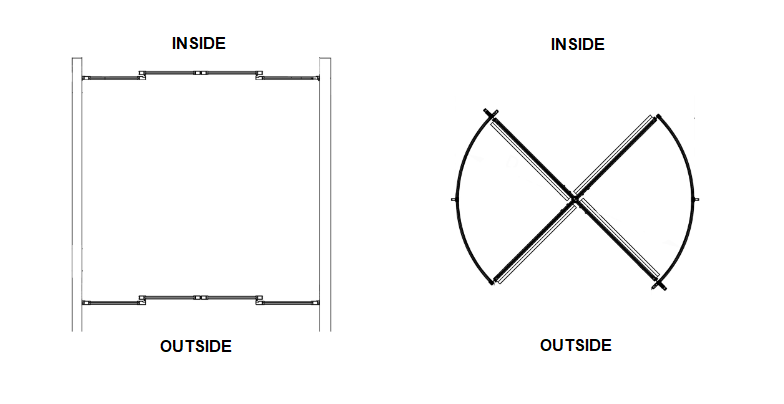
In terms of durability and energy efficiency, a revolving door is often a better choice. An additional advantage: people entering and leaving a building do not get in each other's way. A revolving door greatly limits drafts due to the principle of rotating door wings with closing brushes all around, keeping the indoor and outdoor climate optimally separated. This is not only good for the environment, but it saves a lot on your energy bill.
In close cooperation with TU Delft, Boon Edam has developed software for calculating energy savings that can do just that. This program takes the most decisive characteristics of the building, such as dimensions, location and air permeability. It combines them with local weather information to accurately compare the energy consumption of a revolving door and a sliding or swinging door. The savings are shown in kWh per month and include a simple payback time calculation.
Passage Capacity
The passage capacity of an entrance is also an important point to consider. A single automatic sliding door has a high passage capacity, allowing users to enter or leave a building freely. However, if a draft lobby construction has been chosen, the passage capacity decreases greatly.
A revolving door has a lower passage capacity compared to a single sliding door, but is better for maintaining a comfortable climate. This type of door provides a clear access and a smooth flow. It is especially suitable for allowing people to enter and leave a building smoothly and consecutively, without letting in drafts.
For large numbers of people, a large diameter revolving door, such as a Duotour or Tournex, can be chosen or multiple smaller revolving doors can be used.

|
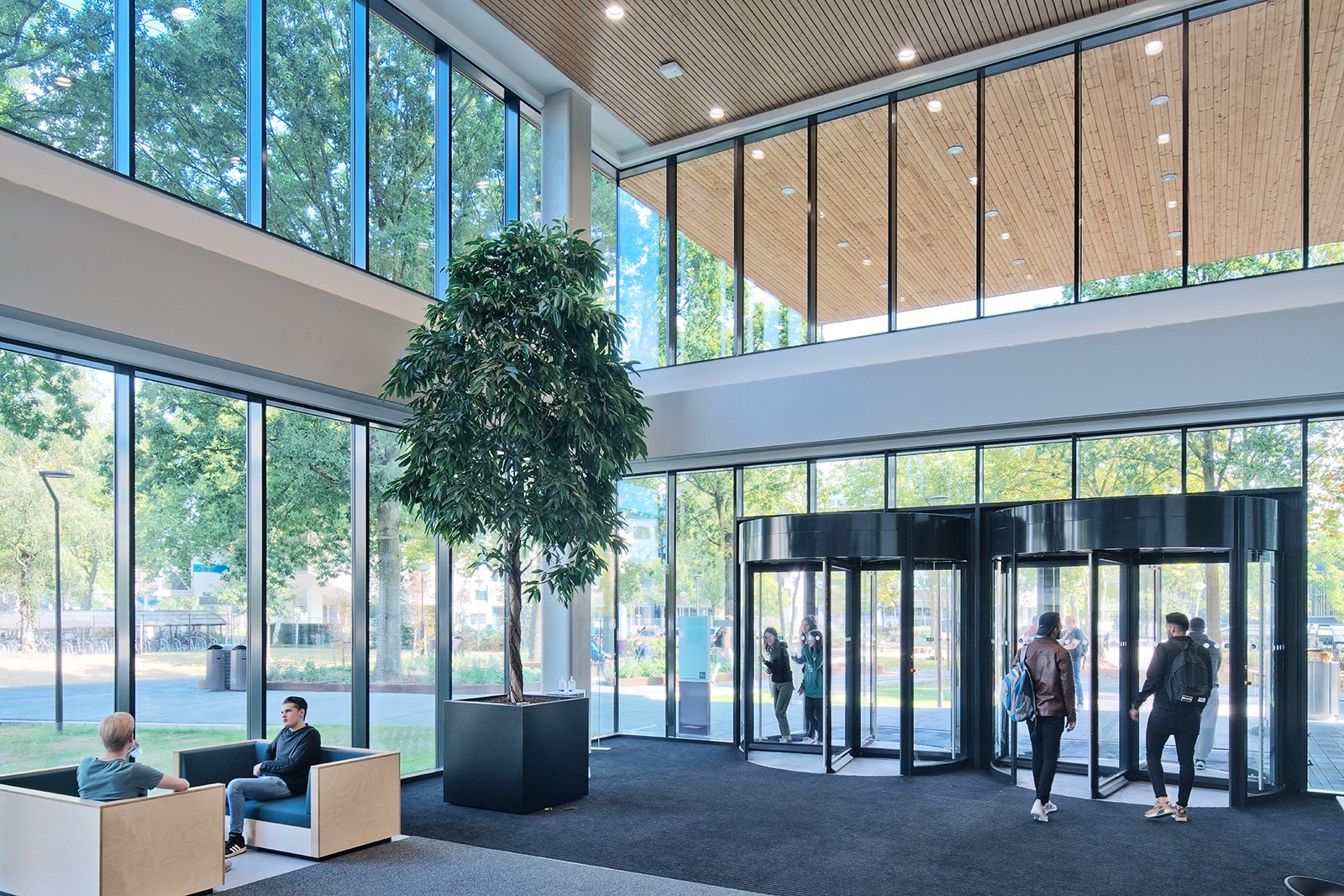
|
Available Floor Space
A single automatic sliding door takes up little space and is therefore particularly suitable as an automatic door inside a building. Assuming that energy saving is important, a vestibule with 2 sets of sliding doors is required for the façade. For proper operation, both sliding doors must be placed at least 4 meters behind each other. This requires a significant amount of floor space.
A revolving door can be placed inside, outside or offset in the façade and therefore requires much less floor space than a vestibule with sliding doors in almost all cases.

|

|
Barrier against theft
Revolving doors are often considered one of the most effective ways to protect buildings and shops against theft. Unlike a single sliding door, a revolving door forces intruders to enter and exit in an orderly manner. This also applies to a vestibule construction with sliding doors. This makes it harder for burglars to quickly run away with stolen goods.
In addition, it is more difficult to take large items with you in the segments of a revolving door. This can deter potential theft, as criminals are aware of these limitations and potential risks.
The use of revolving doors also forms a mental barrier for burglars. The thought that they will be faced with an orderly process of entering and especially leaving the building, can make them reconsider the theft.
Aesthetics with Sliding Doors and Revolving Doors
Automatic sliding doors are often considered less aesthetically pleasing than revolving doors, but there are certainly ways to make them aesthetically attractive. One way to add aesthetics to automatic sliding doors is by using two sets of curved sliding doors one behind the other. These sets of sliding doors can be placed together to create an elegant round entrance, which not only has an aesthetically pleasing appearance, but also creates a sense of space and grandeur.
In addition, there are other options to make automatic sliding doors aesthetically attractive, such as the use of colored glass, the addition of lighting, or the application of specific finishes such as wood or stone. There are also various finishing options for the profiles, such as powder-coated aluminum or stainless steel.
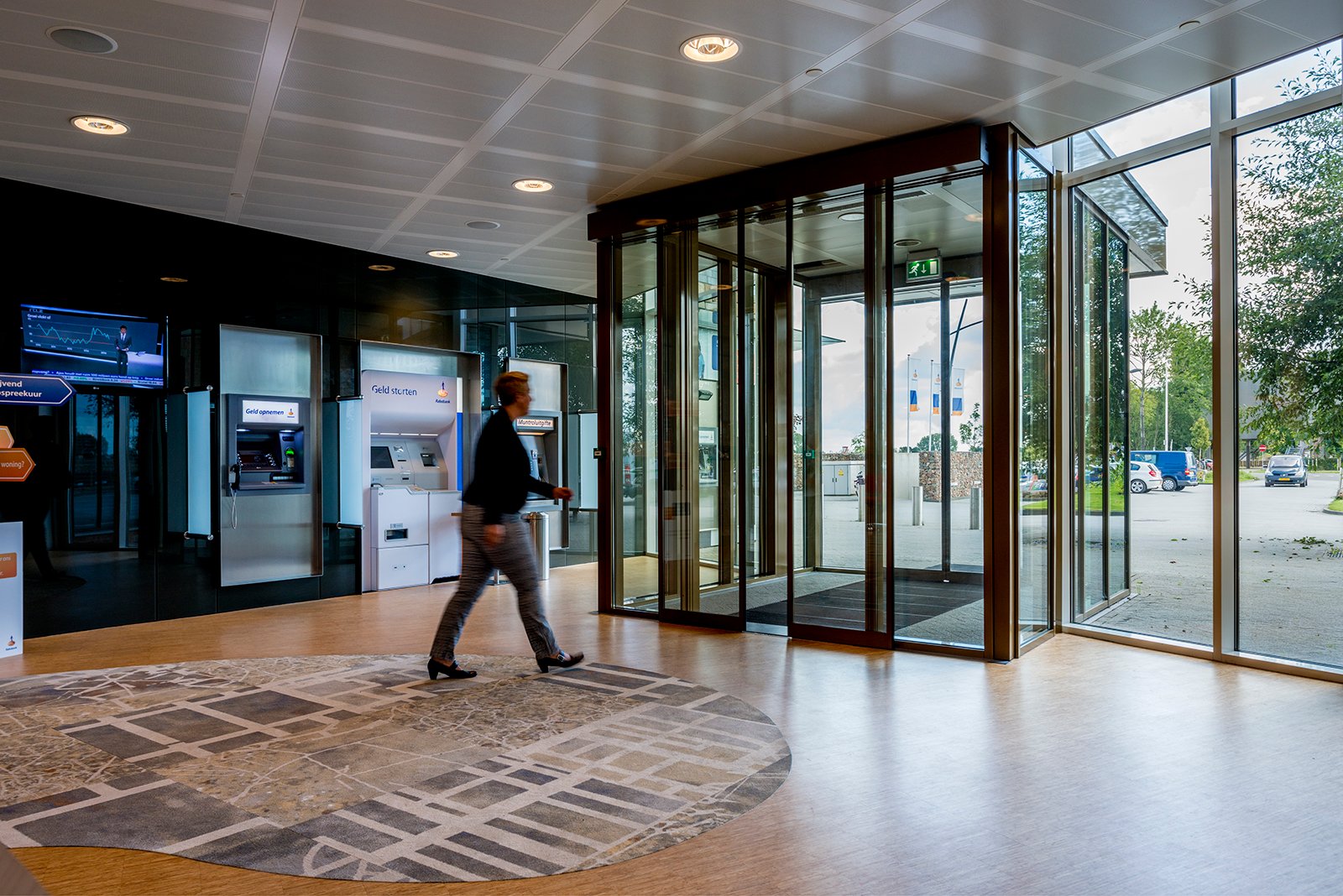
|

|
Revolving doors are often seen as aesthetically attractive. The aesthetics of a revolving door can range from an ultimate eye-catcher to a revolving door that is self-effacing in the facade. There are many options available for the design and finishing of a revolving door, allowing for much to be possible in terms of aesthetics.
The basis of a revolving door often consists of aluminum and glass. This can be covered with materials such as stainless steel, brass, copper, and even gold leaf. A wooden version is also possible. The canopy above the door is also excellent for attractive design. Whether a 'crown' above the door is required or beautifully milled letters in the canopy are made, there is a lot possible. Moreover, revolving doors can still be equipped with additional aesthetic elements, such as lighting and decorative elements. There are even revolving doors with rotating showcases that enhance the aesthetic value and give a unique appearance to the entrance of a building.
By installing a revolving door in the facade of a building, one shows that there is an organisation located that takes things seriously and gives a certain degree of allure and prestige to the entrance. Whether it's for a business or residential environment, a revolving door can be a real eye-catcher.
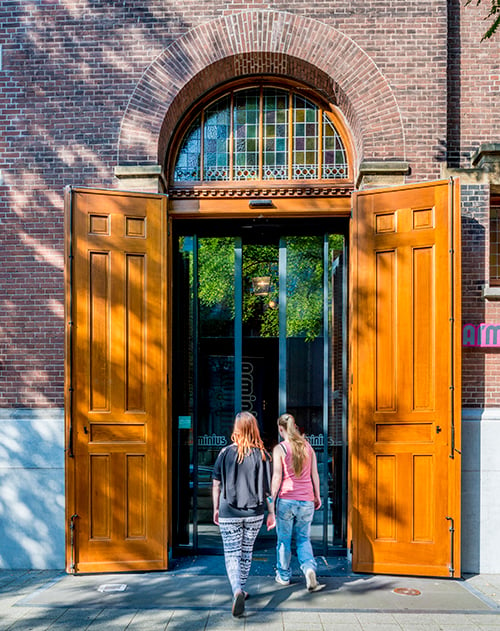
|

|
Accessibility
Accessibility is an important aspect when choosing a door, both for automatic sliding doors and for revolving doors. Both door types are available in different versions that are suitable for people with disabilities.
In the case of revolving doors, a minimum diameter of 3400 mm in combination with three door wings is necessary to be suitable for wheelchair users. There is also a revolving door with a door set that automatically collapses as soon as the button for the disabled is pressed. This makes it possible to offer an unobstructed access for wheelchair users even with doors with a diameter of 2800 mm.
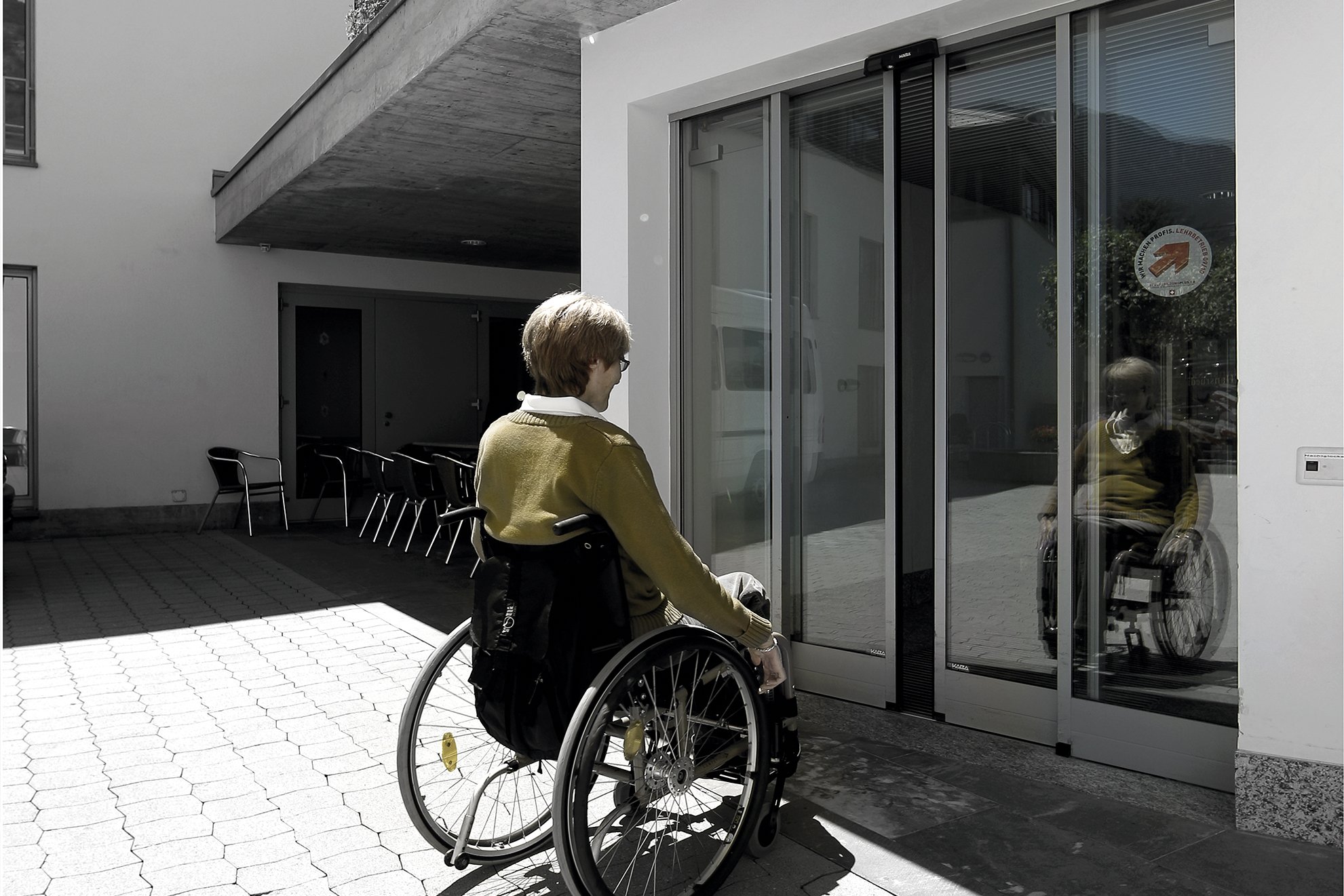
|
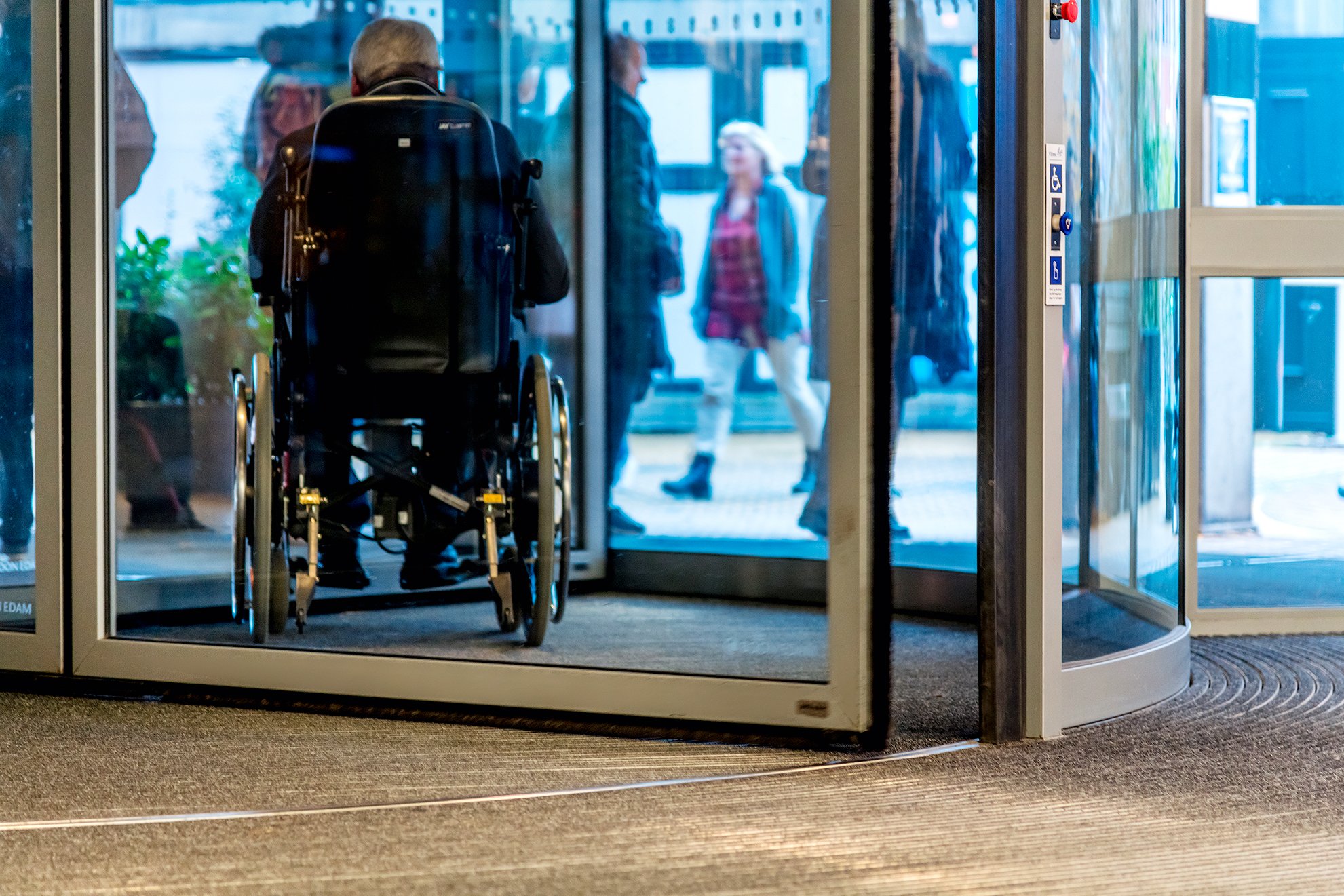
|
It is important to remember that accessibility is not limited to wheelchair users, but also applies to people with other types of disabilities such as poor vision or hearing, and elderly people. Both automatic sliding doors and revolving doors can be equipped with various features such as audio signals, braille markings, and automatic door openers to make them accessible for everyone.
It is therefore important when choosing a door, whether it be an automatic sliding door or a revolving door, to consider the accessibility needs of people with disabilities. By taking these specific needs into account, one can ensure that everyone has unobstructed access to the building.
Conclusion
This blog concerns the choice between revolving doors and sliding doors for the entrance of a building. Both have their own advantages and limitations. The revolving door is a better choice in terms of durability and energy conservation as it limits energy loss and people going in and out of a building don't get in each other's way. However, a revolving door has a lower capacity for throughput than a single sliding door. Consideration must be given to the specific functionality and properties of a building such as the amount of people who need to go through the door, aesthetic preferences, and available floor space.

